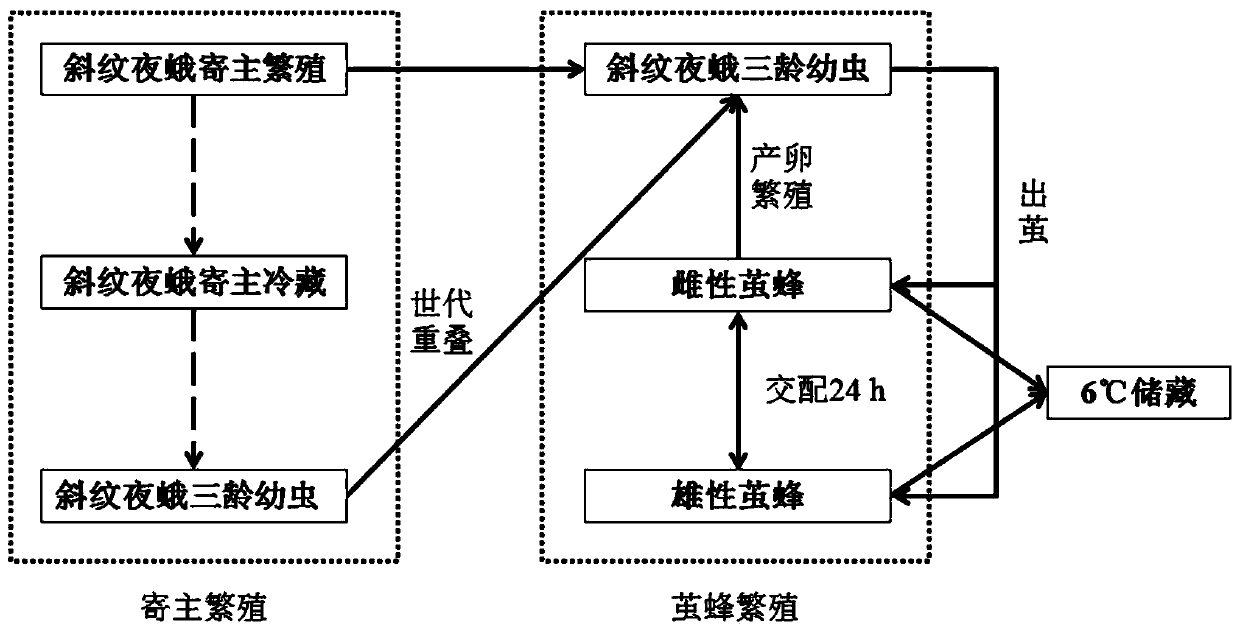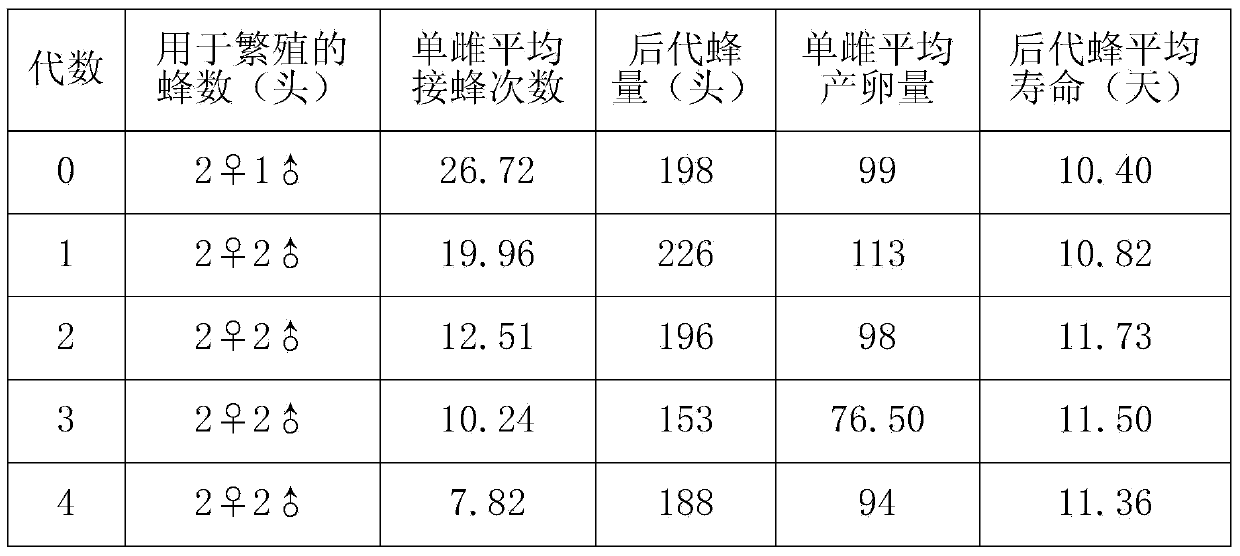Indoor artificial reproduction method of monoparasitism apanteles ruficrus haliday
A technology of artificial breeding and cocoons, which is applied in animal husbandry and other fields, to achieve the effect of simple breeding, strong continuity and strong fecundity
- Summary
- Abstract
- Description
- Claims
- Application Information
AI Technical Summary
Problems solved by technology
Method used
Image
Examples
Embodiment Construction
[0020] The propagation method of the present invention will be specifically described below with examples, with reference to Fig. 1 .
[0021] 1. Reproduction of Spodoptera litura:
[0022] Take 3-4d (about to hatch) egg masses of Spodoptera litura (each egg mass 1cm 2 , about 150 eggs), placed on fresh cotton leaves, and waited for hatching in an artificial climate box at 27±2°C and a relative humidity of 70%. After hatching, the first-instar Spodoptera litura larvae gnaw on the cotton leaves in clusters, observe regularly every day and replace the yellowed and withered leaves. After 7 days of cultivation, the Spodoptera litura larvae grow to about the second and third instars and can be used to inoculate parasitic wasps . Take about 100 Spodoptera litura larvae, pack them in several insect boxes containing artificial feed, raise them in a refrigerator at 6°C, and add food every day, and the rest of Spodoptera litura larvae are still fed with fresh cotton leaves for reprodu...
PUM
 Login to View More
Login to View More Abstract
Description
Claims
Application Information
 Login to View More
Login to View More - R&D
- Intellectual Property
- Life Sciences
- Materials
- Tech Scout
- Unparalleled Data Quality
- Higher Quality Content
- 60% Fewer Hallucinations
Browse by: Latest US Patents, China's latest patents, Technical Efficacy Thesaurus, Application Domain, Technology Topic, Popular Technical Reports.
© 2025 PatSnap. All rights reserved.Legal|Privacy policy|Modern Slavery Act Transparency Statement|Sitemap|About US| Contact US: help@patsnap.com


